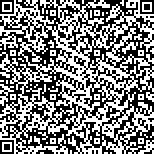| 摘要: |
| 于1995年8-12月,利用单因子实验法,首次研究了混合稀土对球等鞭金藻(Isochrysis galbana)生长繁殖的影响。结果表明,海水中稀土最佳浓度范围为1.66-6.60 mg/L,细胞浓度和叶绿素含量分别提高11.6%-23.2%和1.99%-45.2%;混合稀土加入浓度高于9.9 mg/L对球等鞭金藻的生长产生抑制作用。稀土对球等鞭金藻生长的促进作用与其他营养盐类浓度无关,当细胞处于指数生长期时,加入稀土效果最好。 |
| 关键词: 稀土 球等鞭金藻 叶绿素 |
| DOI: |
| 分类号: |
| 基金项目:国家自然科学基金资助项目,39370548号 |
|
| EFFECTS OF RARE EARTH ON GROWTH OF ISOCHRYSIS GALBANA |
|
QU Ke-ming,YUAN You-xian,XIN Fu-yan
|
|
Yellow Sea Fisheries Research Insritute, The Chinese Academy of Fishery Sciences, Qingdao, 266071
|
| Abstract: |
| In this paper, the effects of rare earth elements on the growth and chlorophyll synthesis of Isochrysis galbana was studied. The experimental rare earth consists of rare earth nitrate, with a Re2O3 content of >= 38.7%. The method for the experiments is as follows. A proper amount of seawater and seeds of Isochrysis galbana, according to the concentration of Isochrysis galbana, was added to a 250 ml triangle flask. The experimental volume was 200 ml; the initial concentrations of the algae, 80-85(×104 cell/ml); the concentrations of nutrient salts-N, P and Fe, 30, 2, 0.5 mg/L respectively. The rare earth was added then to the testing groups; 5 duplicates per concentration group were tested. The experimental temperature was 23±1°C; the source of light, 40W fluorescent lamps; the time of light and black, 10 and 14 hours per day. The triangle flasks were shaken and exchanged their locations 3 - 4 times per day. The cell concentrations of the various groups were calculated by sampling and monitoring the absorption value of the algae solution through the spectrophotometric method in which the length of determining wave was 550 nm; A 1 cm colormetric utensil was used and was taken as the reference solution seawater. The chlorophyll was determined using spectrophotometry.
The results show that, firstly, the cell number of the testing groups is significantly larger (P < 0.05) than that of the controlled group from the fourth day and at a 1.65 - 6.60 mg/L concentration of the rare earth elements. The cell concentration of the testing group is raised by 23.2% at a 4.95 mg/L concentration of the rare earth elements, compared with the controlled group. However, rare earth elements reduce the culture of Isochrysis galbana if the concentrations are higher than 9.9 mg/L. Secondly, the cell concentration of the testing group was significantly larger (P < 0.05) than that of the controlled group from the 4th day, when the ratios of nutrient salts N:P:Fe in the testing groups were 30:2:0.5 mg/L, 15:1:0.25 mg/L, 10:0.67:0.17 mg/L and 7.5:0.5:0.13 mg/L, respectively, in which the concentration of the rare earth constituents was 4.95 mg/L. Thirdly, when the rare earth was added on the 1st, 2nd ,3th and 4th day, the cell concentration of the testing groups was significantly larger (P < 0.05) than that of the controlled group from the second day after the rare earth was added; however, on the 5th day there was no significant different between the testing groups and controlled group. Finally, the chlorophyll content of the testing groups is raised by 19.9% - 45.2% for 1.65 - 6.60 mg/L concentrations of the rare earth elements, compared with the controlled group.
Hence, the mixed rare earth elements have a significant effect on the enhancement of the growth and chlorophyll synthesis of Isochrysis galbana. There is no relationship between the enhancement effect and the concentration of other nutrient salts. Further, such an effect is not related to the time when the rare earth was added during the exponential growth period of Isochrysis galbana. |
| Key words: Rare earth elements, Isochrysis galbana, chlorophyll |
